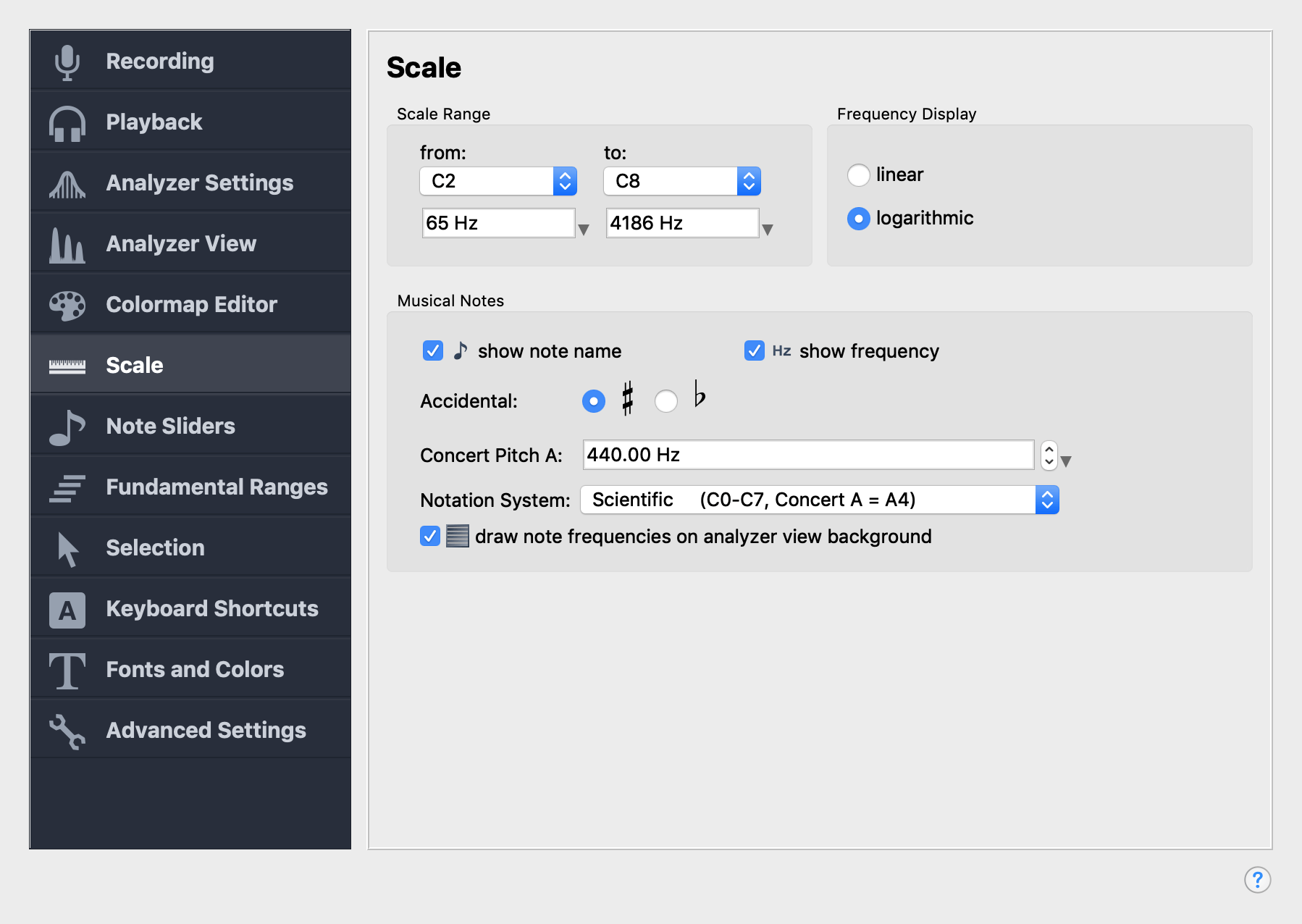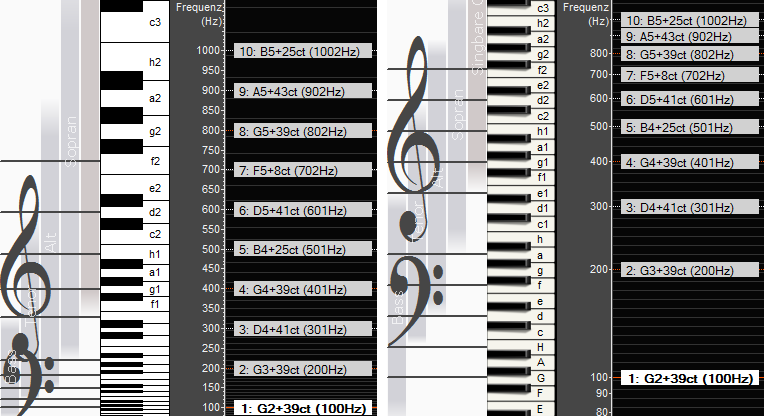Scale Settings
On this settings page you can select range, type and orientation of the
frequency scale. Most of those settings can also be found on the toolbar.
This is the lowest and highest note or the lowest and highest frequency
that are displayed the piano and Analyzer Views. The scale range can also
be changed by clicking and dragging the frequency scale in the main view,
or by using the mouse wheel in that view.
This determines if the frequency scale is linear or logarithmic.
Figure 3.42 illustrates the difference between the linear (left side) and logarithmic (right side)
frequency scale. Both sides show the same frequency range from about 80Hz to 1100Hz, which corresponds to the note range from E2 to C6.
When the scale is linear, consecutive harmonics
have the same distance on the screen, but the piano keys get wider for
higher frequencies.
With the logarithmic frequency scale, all piano
keys have the same size, but higher harmonics are spaced more and more closely than the lower ones. The logarithmic scale represents how the ear
perceives pitch. Towards the lower end of the scale, we can distinguish
very small frequencies and hear them as different notes. On the upper end
of the scale, each note covers a much wider frequency range. The
logarithmic scale is therefore more suitable for analyzing music, as it
shows much more detail in the lower note range.
This group of settings controls how note names are shown on the piano keyboard and
on the overtone sliders.
This will show the frequency in Hz on the labes of note sliders and on the pitch display.
This determines if the notes on the black keys of the piano are displayed
with the sharp or flat sign. You can also right-click into the Staff View
to switch the accidental.
Here you can set the frequency of the concert pitch that is used as a
reference for all other tones. By default, the concert pitch A is 440Hz.
You can choose between three different notation systems:
- Helmholtz Notation
This system is used mainly in
German speaking countries. The notes on the piano range from A2 to C,
and then from c-c5. Notice the use of both upper and lower case.- Scientific Notation
This notation is more common in
English speaking countries. The notes on the piano range from A0 to C8.- Piano Keyboard Notation
In this system, the keys are
numbered from 1 to 88 as they would appear on a real piano, counting
white and black keys. This notation is mainly used by piano tuners.


